Robert Collins
Penn State
Crowd Scene Analysis
• Using computer vision tools to look at
people in public places
• Real-time monitoring
– situation awareness
– notifications/alarms
• After-action review
– traffic analysis
VLPR 2012
�
Robert Collins
Penn State
Crowd Scene Analysis
Things we might want to know:
• How many people are there?
• How to track specific individuals?
• How to determine who is with whom?
Challenges:
Crowd scenes tend to have low resolution.
You rarely see individuals in isolation.
Indeed, there are frequent partial occlusions.
VLPR 2012
�
Robert Collins
Penn State
Crowd Counting
FAQ: How many people participated in ...
• Tahrir Square Protests
• Obama’s inaguration
• Occupy Wall Street
• Kumbh Mela
VLPR 2012
�
Robert Collins
Penn State
Jacob’s Method
• Herbert Jacobs, Berkeley, 1960s
• count = area * density
– 10 sqft/person – loose crowd (arm’s length from each other)
– 4.5 sqft/person – more dense
– 2.5 sqft/person – very dense (shoulder-to-shoulder)
• Problem: Pedestrians do not uniformly distribute
over a space, but clump together into groups or
clusters.
• Refinement: break area into a grid of ground patches
and estimate a different density in each small patch.
Accumulate these counts over whole area.
VLPR 2012
�
Robert Collins
Penn State
Example of Jacob’s Method
VLPR 2012
source http://www.popularmechanics.com/science/the-curious-science-of-counting-a-crowd
�
Robert Collins
Penn State
Computer Vision Could do Better!
Cavaet: nobody really wants accurate counts
e.g. organizers of the “Million Man March” in
Washington DC threatened to sue the
National Park Service for estimating that
only 400K people attended.
VLPR 2012
�
Robert Collins
Penn State
Vision-based Counting
• detection and tracking (light density)
• clustering feature trajectories that move
coherently (moderate density)
• treat crowd as a dynamic texture and
compute regression estimates based on
measured properties (heavy density)
VLPR 2012
�
Robert Collins
Penn State
Detecting and Counting Individuals
Ge and Collins, "Marked Point Processes for Crowd Counting," IEEE Computer Vision and
Pattern Recognition (CVPR'09), Miami, FL, June 2009, pp.2913-2920.
Good for low-resolution / wide-angle views.
Relies on foreground/background segmentation.
Not appropriate for very high crowd density or stationary people.
VLPR 2012
�
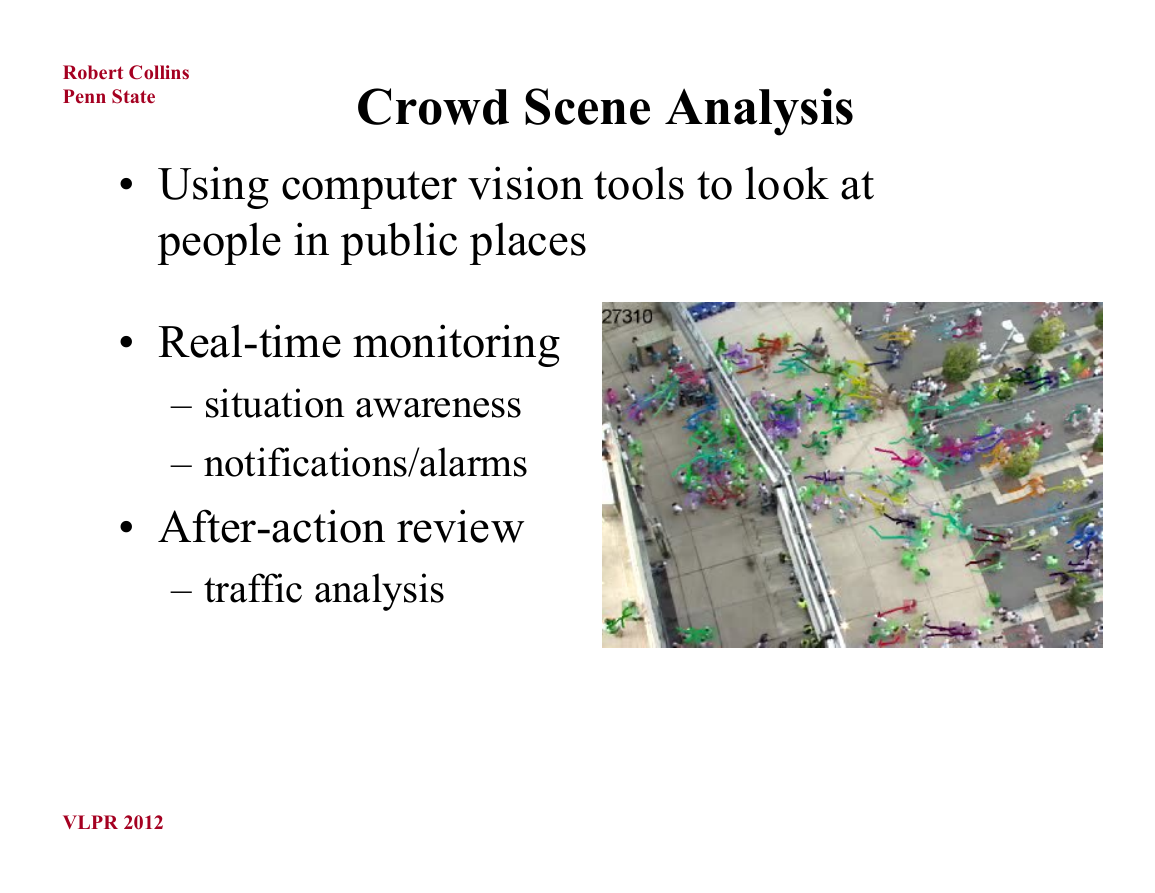
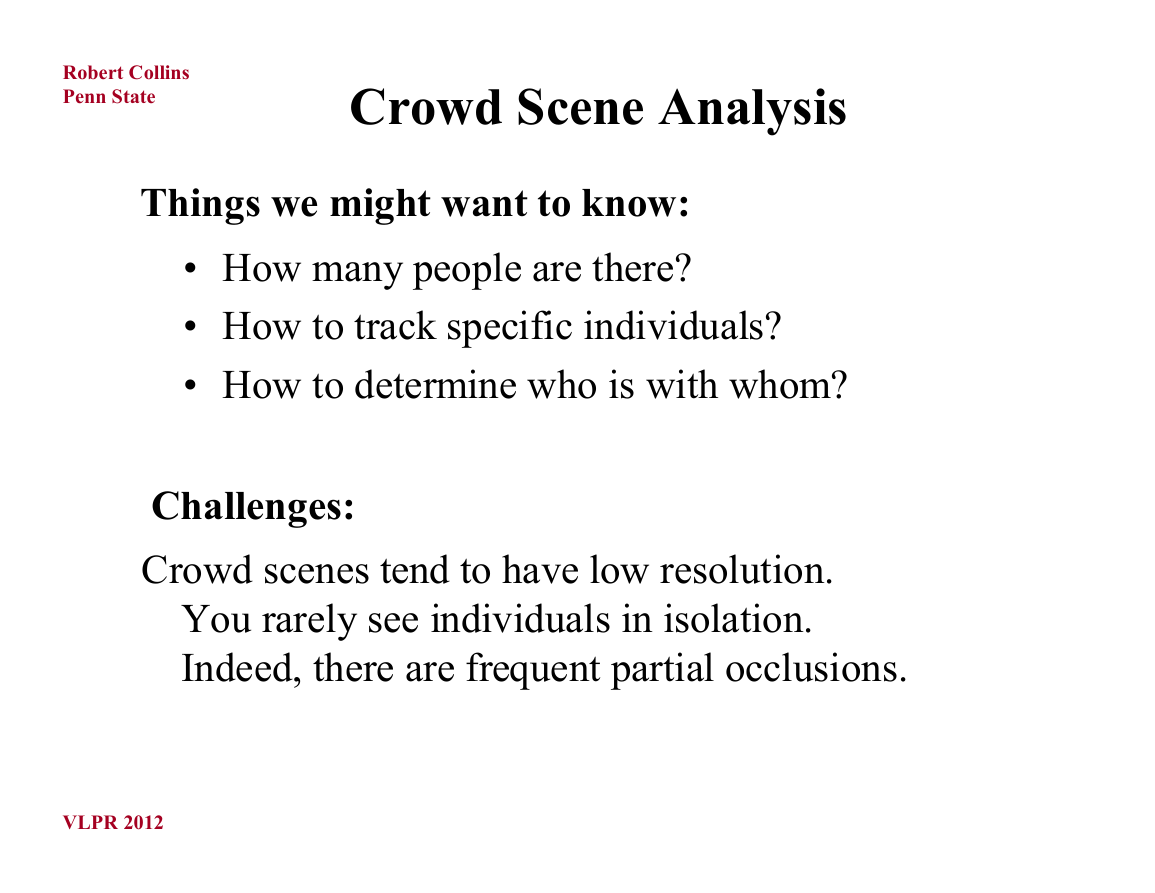
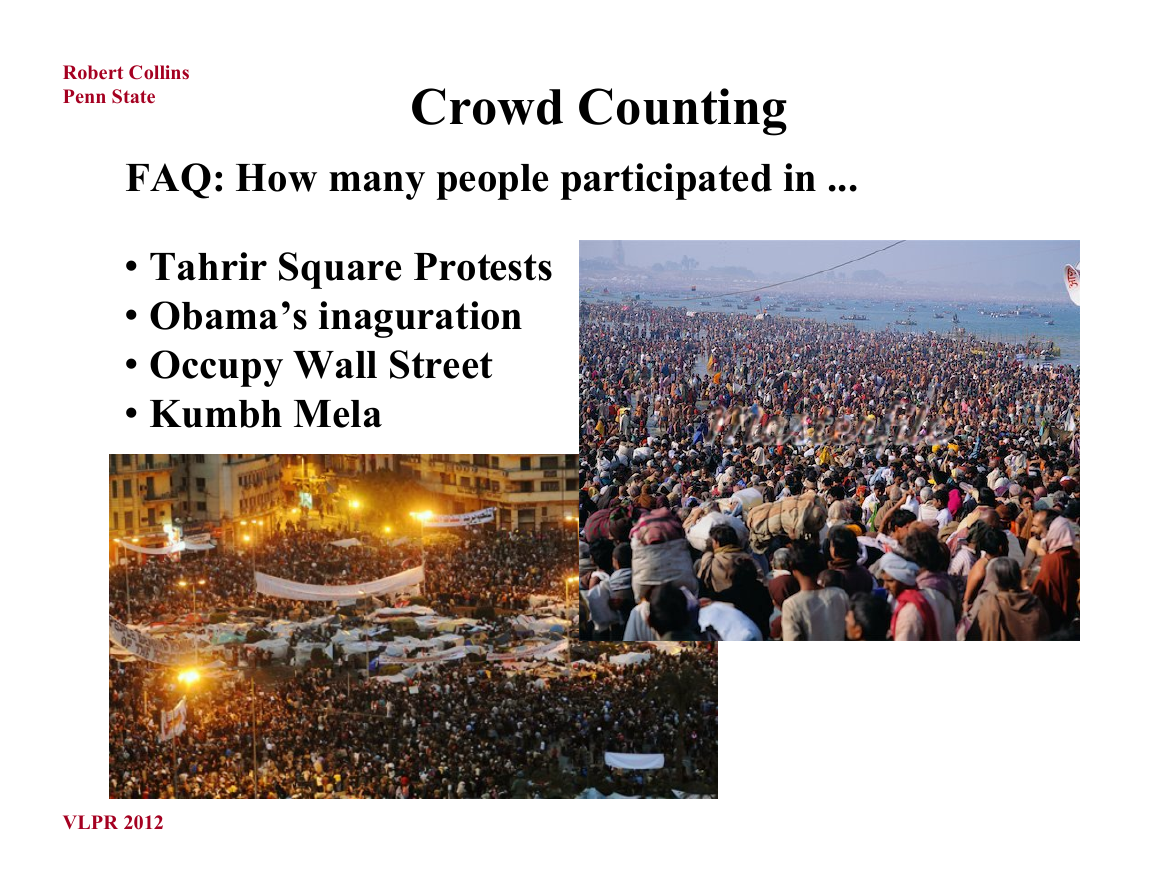
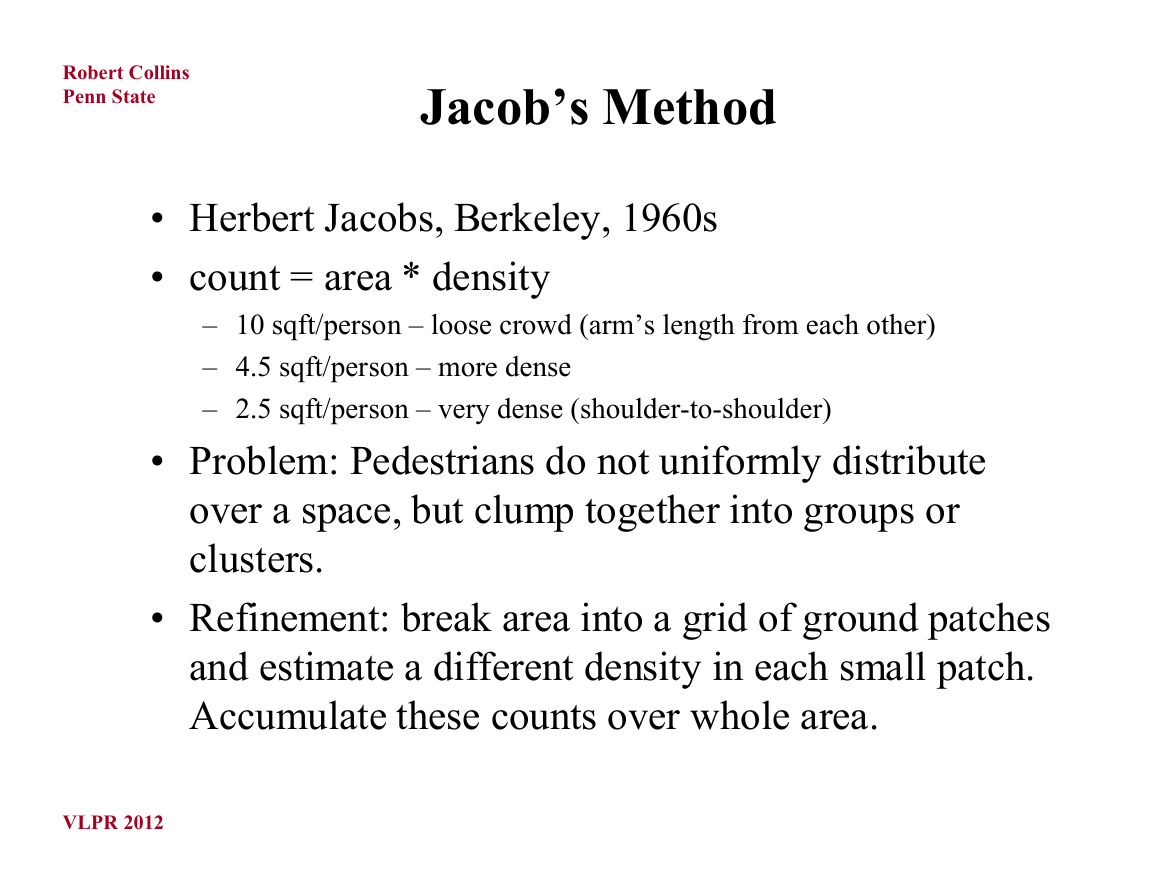
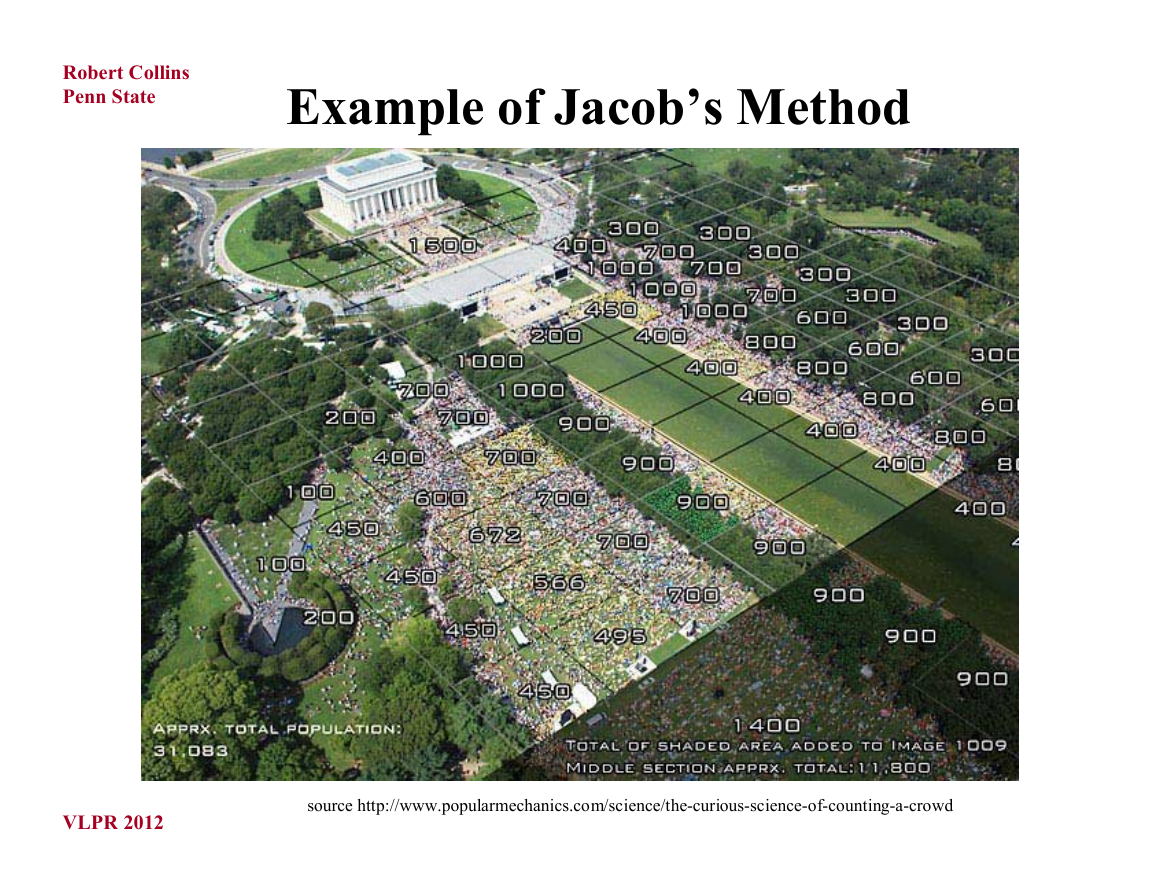
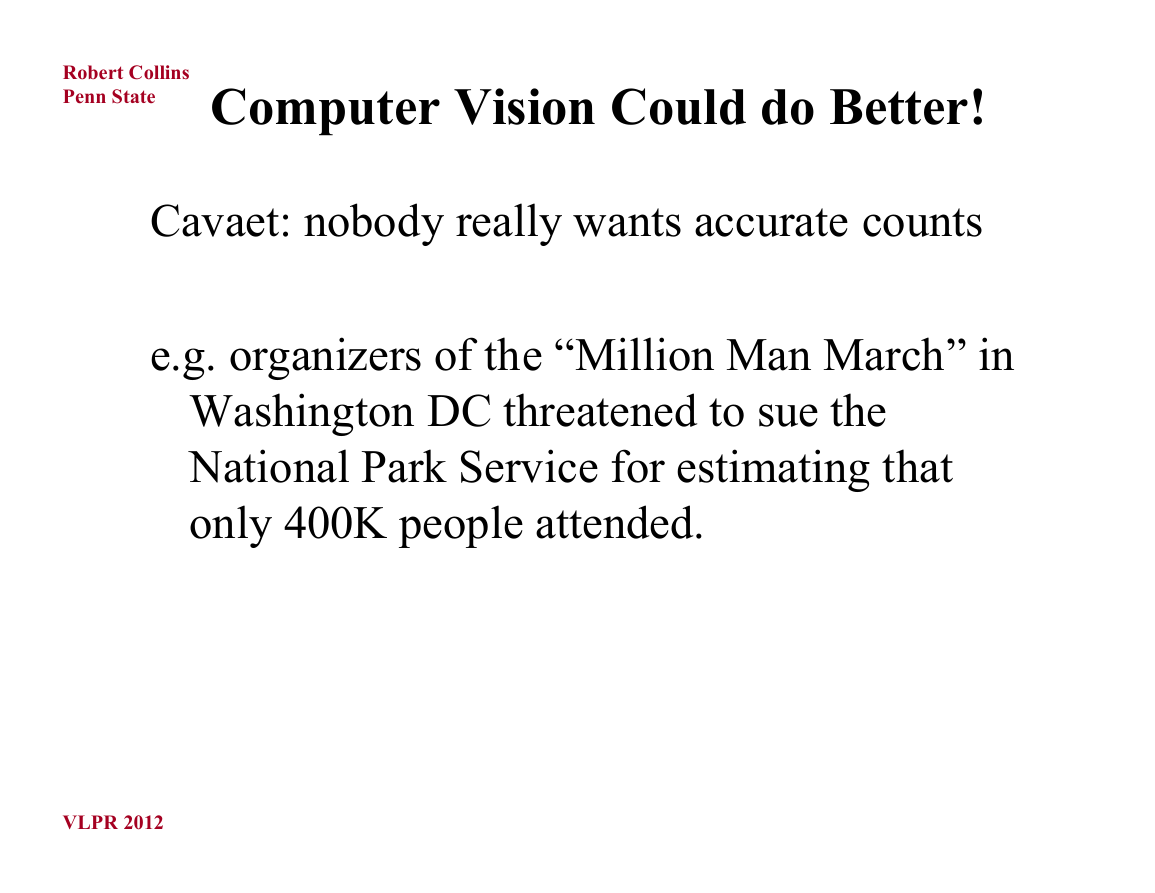
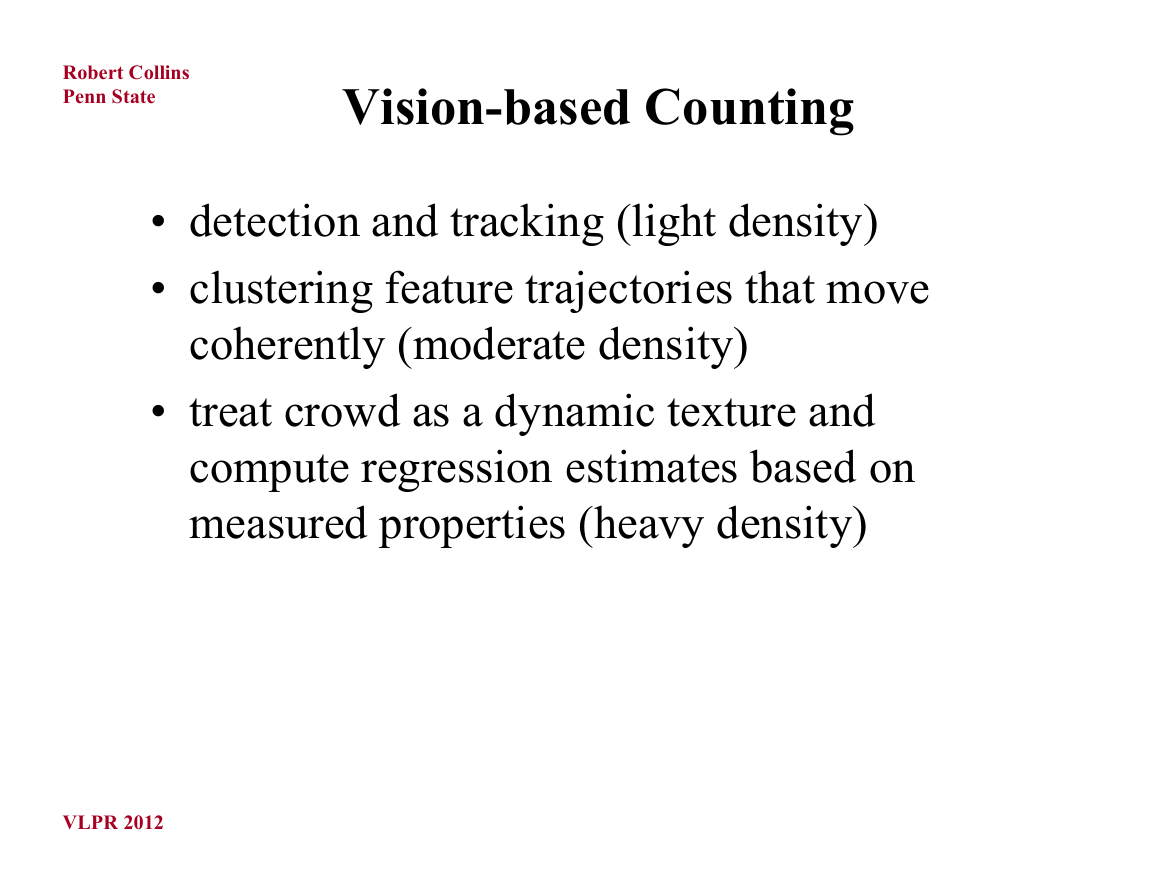
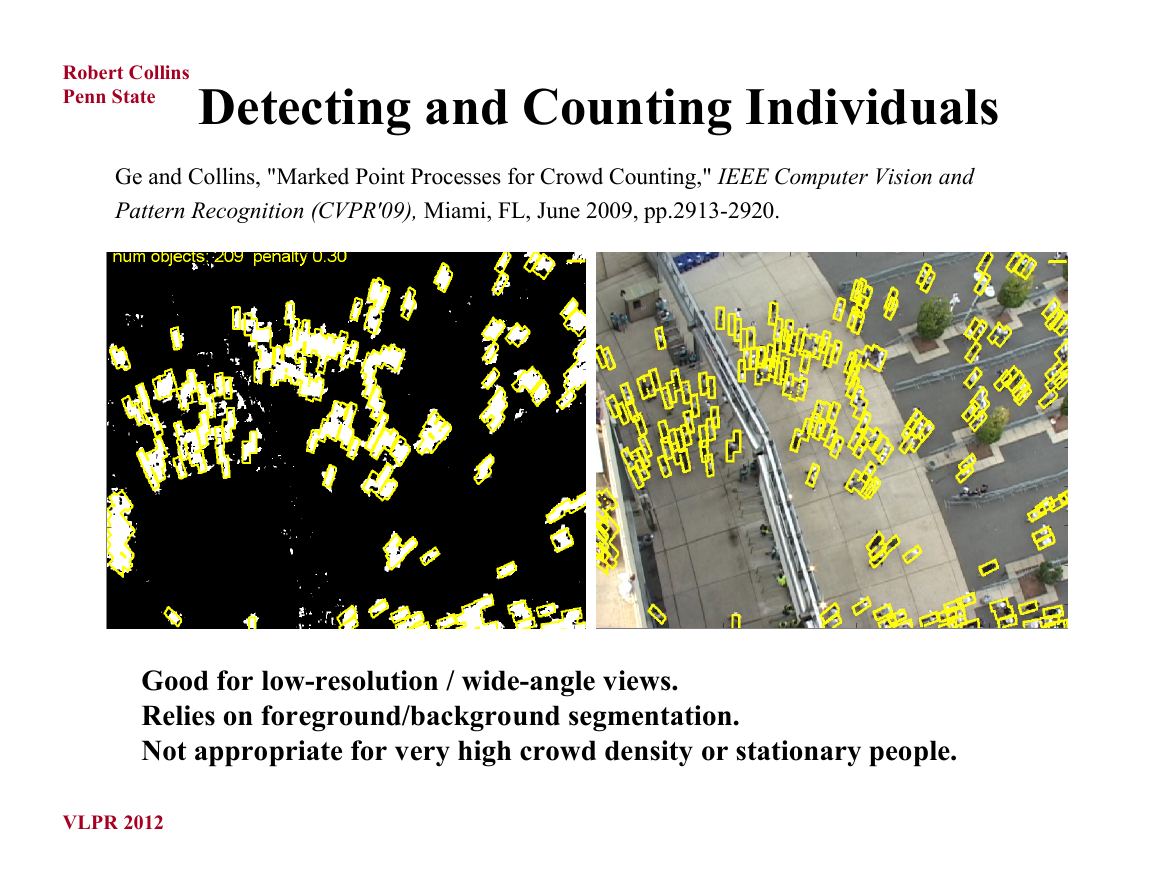








 2023年江西萍乡中考道德与法治真题及答案.doc
2023年江西萍乡中考道德与法治真题及答案.doc 2012年重庆南川中考生物真题及答案.doc
2012年重庆南川中考生物真题及答案.doc 2013年江西师范大学地理学综合及文艺理论基础考研真题.doc
2013年江西师范大学地理学综合及文艺理论基础考研真题.doc 2020年四川甘孜小升初语文真题及答案I卷.doc
2020年四川甘孜小升初语文真题及答案I卷.doc 2020年注册岩土工程师专业基础考试真题及答案.doc
2020年注册岩土工程师专业基础考试真题及答案.doc 2023-2024学年福建省厦门市九年级上学期数学月考试题及答案.doc
2023-2024学年福建省厦门市九年级上学期数学月考试题及答案.doc 2021-2022学年辽宁省沈阳市大东区九年级上学期语文期末试题及答案.doc
2021-2022学年辽宁省沈阳市大东区九年级上学期语文期末试题及答案.doc 2022-2023学年北京东城区初三第一学期物理期末试卷及答案.doc
2022-2023学年北京东城区初三第一学期物理期末试卷及答案.doc 2018上半年江西教师资格初中地理学科知识与教学能力真题及答案.doc
2018上半年江西教师资格初中地理学科知识与教学能力真题及答案.doc 2012年河北国家公务员申论考试真题及答案-省级.doc
2012年河北国家公务员申论考试真题及答案-省级.doc 2020-2021学年江苏省扬州市江都区邵樊片九年级上学期数学第一次质量检测试题及答案.doc
2020-2021学年江苏省扬州市江都区邵樊片九年级上学期数学第一次质量检测试题及答案.doc 2022下半年黑龙江教师资格证中学综合素质真题及答案.doc
2022下半年黑龙江教师资格证中学综合素质真题及答案.doc